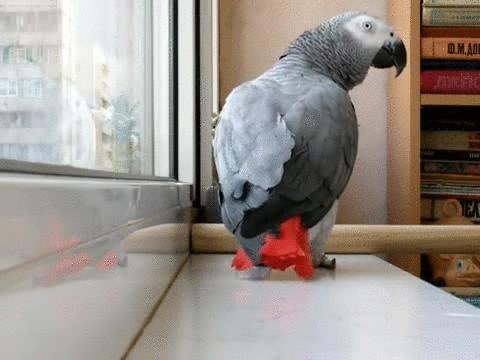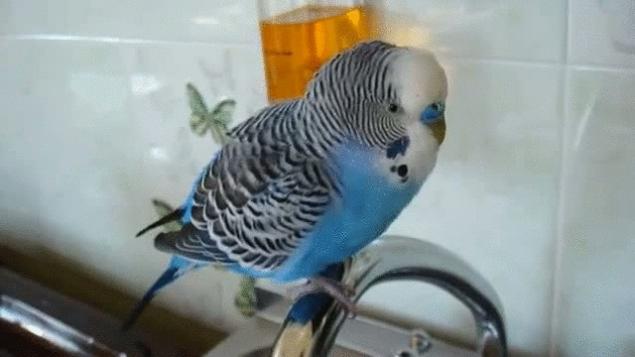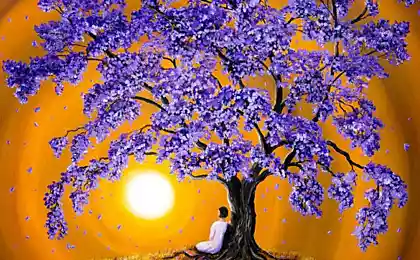636
How to teach a parrot to talk
A parrot sitting in a separate cage, can be manual and without fear to sit on the shoulder or arm of a person. To train the bird, you need to have patience and perseverance, because sometimes come across wild birds. First a cage with a wild parrot is put on the height of human growth on any nightstand or dresser, and when approaching him his name, trying not to make any sudden movements. As soon as parrot gets used to the new place, which is usually not earlier than a week, it gradually accustom to itself. First of all you need to achieve that he used to eat food in your presence. To do this, when a parrot comes down to the feeder and begins to eat food, you need to carefully and slowly approach it. First, the bird in your approach will dramatically rush up the cage, but every day is nearer to fend for themselves, and then cease to react to you approaching. After that you need to teach her to take food from the hands. For this purpose, you take out the most favorite food in the fingers and gradually, without sudden movements, slips between the bars of the cage, gently calling the parrot by name.

The first stage of training is the most difficult, and sometimes you have to do this procedure for several days until the bird takes courage and will take a treat from your hands. The next time she takes the offer of food is bolder, but by grabbing it, usually bounces on the opposite end of the perch. When the parrot bravely will take the treat from your hand, it should be taught to sit on the arm. For this approach the cage, open the door slowly, pushes inside the cell the palm, which is a piece of cake, quietly and gently saying at the same time. Parrot, brought delicious food, after long hesitation, usually the first time to sit on the hand and takes with the palm feed. A delicacy for these birds can be a piece of wheat bread soaked in milk, sweet tea or coffee.
When a parrot without fear will take food from the palm sit on it, start the final stage of training. First try to bear it for the hand out of the cage. If you succeed, it means that the bird become tame and can be trained to fly to your call and take the shoulder or arm. Parrot out of the cage into the room, and, calling by name, show the treat. When training to continue to feed him only in the cage Il with his hands, otherwise he will not come back, and it should do all the manual parrots. Training is best done when parrot is hungry, he fed less willing to treat.

Talking parrot is not just talking, but correctly applies the words. For example, when he's hungry, then says, "Give daddy clover", of course, if it were taught correctly. Saying something is a learned word or phrase, the parrot associates the meaning with the event or time of the day when they were spoken to him at training, and delivers them at the right time.
To pronounce words to learn, both large and small individuals, females and males, but not all birds even of the same species have the same learning abilities. Appearance not able to distinguish the parrot from the bird of average talent or just incapable of learning. However, buying birds, you should always choose the most young and mobile who carefully look and listen to all that is happening around. No General consensus regarding who is gifted with more ability to learn – male or female. According to the observations, good talking parrots often caught among females. When training, as when training, you should contact with the birds as gentle as possible to gain their trust. Start learning better when a bird you have will get used and will sit on the arm. Manual parrot easier to perceive human speech.

Before the lesson the parrot placed in a separate room to avoid distracting other birds. When learning the whistling verses from songs learning to correctly pronounce and good to whistle motive, and always the same, exactly and distinctly. Training should be carried out during certain hours of the day, the advantage in the morning and before feeding treats. Educational whistling one of the songs and on making parrot play it. When the bird learns the right verse, move on to the next and gradually achieve good performance. So the parrot was whistling the verses of the song in the correct order, training whistles both verses in a row. If a parrot is a wrong-doer, like a verse, teaching corrects him until then, until you get proper playback. At the end of the lesson the parrot, give a treat and put the cage in a permanent place.
The learning conversation should start with the simplest of words. Every day, especially in the morning before feeding, you must speak loudly, clearly and in an even voice one word. The first words taught by the parrot, must have the vowels "a" or "o", mostly the same consonants K, p, R, t Experience shows that parrots are more receptive to female voices than male. Words, taught the bird needs to be said of place. For example, when the parrot feed, saying "the Shelf wants to eat," logging, you should say: "Hello", leaving "goodbye". All the words are able, the bird learns quickly and time them to the appropriate instances correctly. With a talking parrot must constantly deal with, so they develop their skills. Modern technology provides great opportunities for training parrots, conversation using a tape recorder. However, best results are achieved only when training birds by man himself.

Sommet:
"Talk" can almost any parrots, but is recognized as the most talkative, most closely mimic the human voice: Jaco, Amazon, to a lesser extent wavy. Even within the same species across talented and utterly untalented individuals. Do not ask your pet impossible.
If parrots are many, that which you teach to speak, it is better to keep separate, at least during classes.
Don't expect to cruise the pupil to speak after the first lesson, some take weeks, others a month, others not proiznesti words, and they will sing in their own language or just to imitate sounds, such as running the vacuum cleaner
Learn the best conversation young males although females are also able to learn speech.
Source: /users/104

The first stage of training is the most difficult, and sometimes you have to do this procedure for several days until the bird takes courage and will take a treat from your hands. The next time she takes the offer of food is bolder, but by grabbing it, usually bounces on the opposite end of the perch. When the parrot bravely will take the treat from your hand, it should be taught to sit on the arm. For this approach the cage, open the door slowly, pushes inside the cell the palm, which is a piece of cake, quietly and gently saying at the same time. Parrot, brought delicious food, after long hesitation, usually the first time to sit on the hand and takes with the palm feed. A delicacy for these birds can be a piece of wheat bread soaked in milk, sweet tea or coffee.
When a parrot without fear will take food from the palm sit on it, start the final stage of training. First try to bear it for the hand out of the cage. If you succeed, it means that the bird become tame and can be trained to fly to your call and take the shoulder or arm. Parrot out of the cage into the room, and, calling by name, show the treat. When training to continue to feed him only in the cage Il with his hands, otherwise he will not come back, and it should do all the manual parrots. Training is best done when parrot is hungry, he fed less willing to treat.

Talking parrot is not just talking, but correctly applies the words. For example, when he's hungry, then says, "Give daddy clover", of course, if it were taught correctly. Saying something is a learned word or phrase, the parrot associates the meaning with the event or time of the day when they were spoken to him at training, and delivers them at the right time.
To pronounce words to learn, both large and small individuals, females and males, but not all birds even of the same species have the same learning abilities. Appearance not able to distinguish the parrot from the bird of average talent or just incapable of learning. However, buying birds, you should always choose the most young and mobile who carefully look and listen to all that is happening around. No General consensus regarding who is gifted with more ability to learn – male or female. According to the observations, good talking parrots often caught among females. When training, as when training, you should contact with the birds as gentle as possible to gain their trust. Start learning better when a bird you have will get used and will sit on the arm. Manual parrot easier to perceive human speech.

Before the lesson the parrot placed in a separate room to avoid distracting other birds. When learning the whistling verses from songs learning to correctly pronounce and good to whistle motive, and always the same, exactly and distinctly. Training should be carried out during certain hours of the day, the advantage in the morning and before feeding treats. Educational whistling one of the songs and on making parrot play it. When the bird learns the right verse, move on to the next and gradually achieve good performance. So the parrot was whistling the verses of the song in the correct order, training whistles both verses in a row. If a parrot is a wrong-doer, like a verse, teaching corrects him until then, until you get proper playback. At the end of the lesson the parrot, give a treat and put the cage in a permanent place.
The learning conversation should start with the simplest of words. Every day, especially in the morning before feeding, you must speak loudly, clearly and in an even voice one word. The first words taught by the parrot, must have the vowels "a" or "o", mostly the same consonants K, p, R, t Experience shows that parrots are more receptive to female voices than male. Words, taught the bird needs to be said of place. For example, when the parrot feed, saying "the Shelf wants to eat," logging, you should say: "Hello", leaving "goodbye". All the words are able, the bird learns quickly and time them to the appropriate instances correctly. With a talking parrot must constantly deal with, so they develop their skills. Modern technology provides great opportunities for training parrots, conversation using a tape recorder. However, best results are achieved only when training birds by man himself.

Sommet:
"Talk" can almost any parrots, but is recognized as the most talkative, most closely mimic the human voice: Jaco, Amazon, to a lesser extent wavy. Even within the same species across talented and utterly untalented individuals. Do not ask your pet impossible.
If parrots are many, that which you teach to speak, it is better to keep separate, at least during classes.
Don't expect to cruise the pupil to speak after the first lesson, some take weeks, others a month, others not proiznesti words, and they will sing in their own language or just to imitate sounds, such as running the vacuum cleaner
Learn the best conversation young males although females are also able to learn speech.
Source: /users/104























